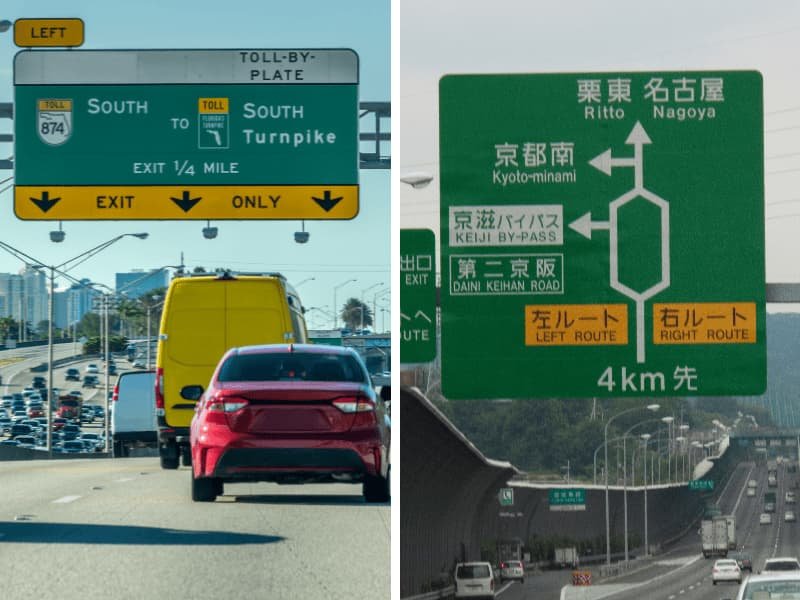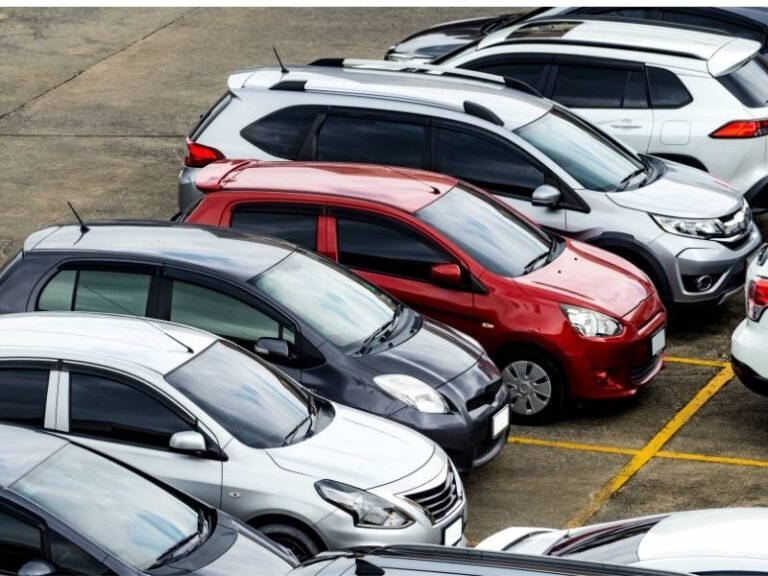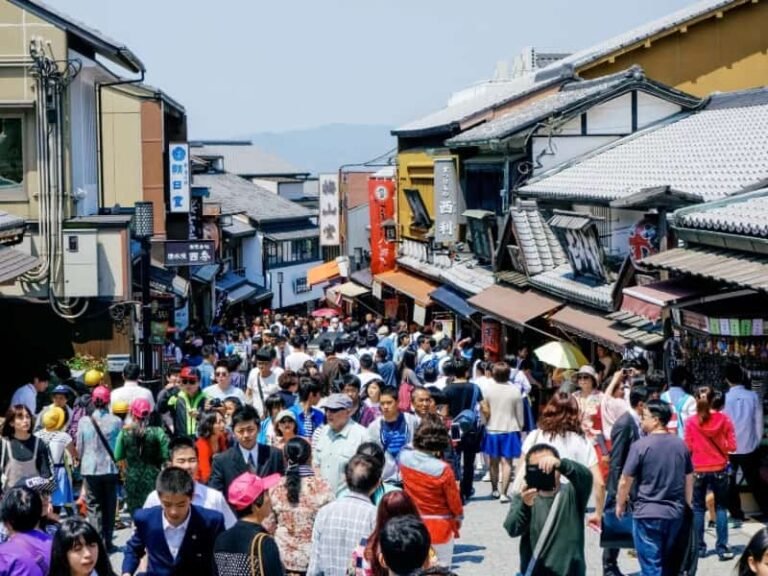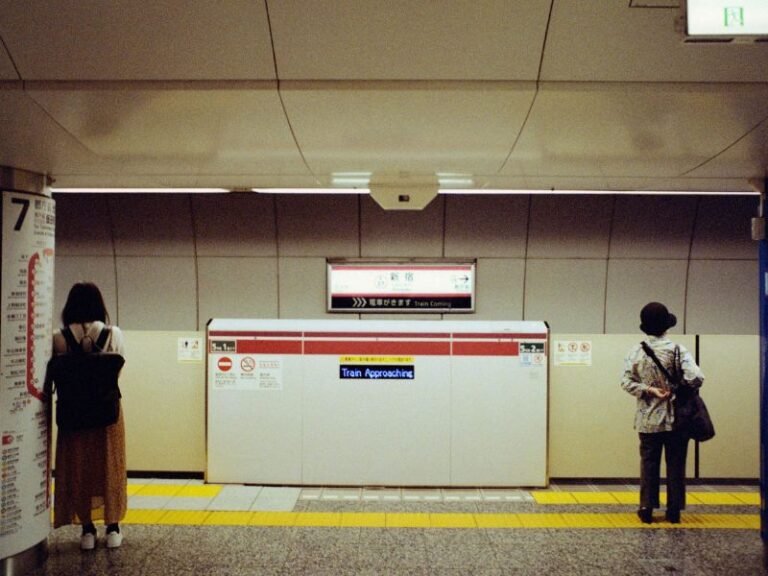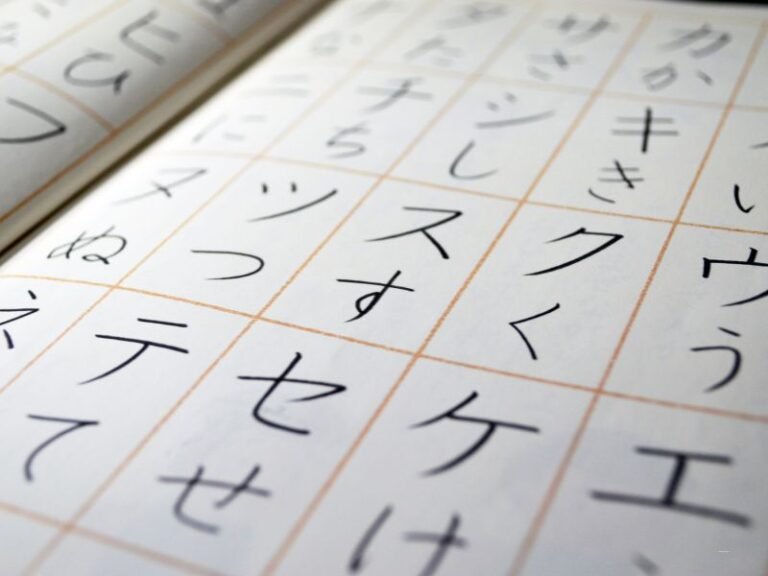Japanese Expressways vs American Interstates: Useful Driving Tips & Key Differences
Quick Facts: Japanese Expressways vs US Interstate
| Feature | Japan – Expressways | USA – Interstates |
|---|---|---|
| Cost | Tolls common; Tokyo–Osaka (~500 km) ≈ ¥14,000 ($95) one way | Mostly free; some toll segments |
| Speed Limit | 80–100 km/h (50–62 mph) | 105–120 km/h (65–75 mph), up to 85 mph |
| Rest Areas | Frequent, well-equipped, unique shops | Less frequent, often standardized food/gas |
| Navigation | Numbered routes, Japanese & English signs | Numbered routes, English signs |
| Enforcement | Many speed cameras, strict rules | Varies by state, generally more lenient |
| Driving Side | Left | Right |
Introduction – My Experience Driving in Japan and the USA
After visiting all 47 prefectures in Japan and 50 states in the USA, I’ve experienced two very different road systems.
When I first started driving in the USA, I thought the Japanese expressways were better — smooth roads, great service areas, and an overall polished feel. But after a few months, I began to appreciate the interstate system. Even for less experienced drivers like me, American interstates are easy to navigate thanks to their wide lanes, logical design, and — most importantly — they’re almost free.
If the USA charged tolls like Japan, I could never have afforded to visit all 50 states.
For first-time drivers in Japan, it’s important to know the differences. Things like lane direction and speed limits are completely different. In the USA, I often drive at 70–80 mph (113–129 km/h), but in Japan, that would be considered dangerously fast.
What Is the Japanese Expressways System?
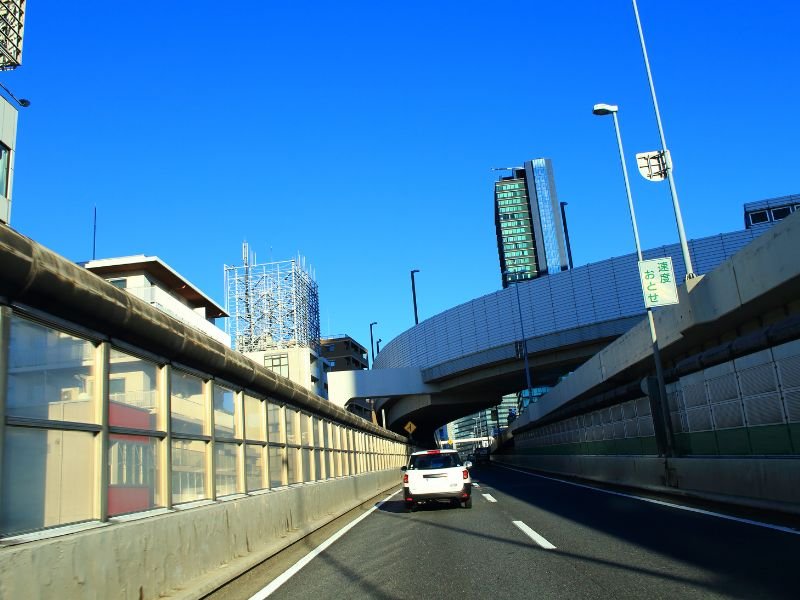
The Japanese expressway network connects all major cities and regions, from Hokkaido in the north to Kyushu in the south. These roads are designed for long-distance travel at consistent speeds, but they operate very differently from American interstates.
How the Expressway Network Connects Japan’s Regions
Expressways link urban centers like Tokyo, Osaka, and Nagoya, as well as remote areas. In mountainous regions, you’ll find many tunnels and bridges, while coastal routes often offer scenic ocean views.
Entry and Exit Points – Normal vs Smart Interchanges
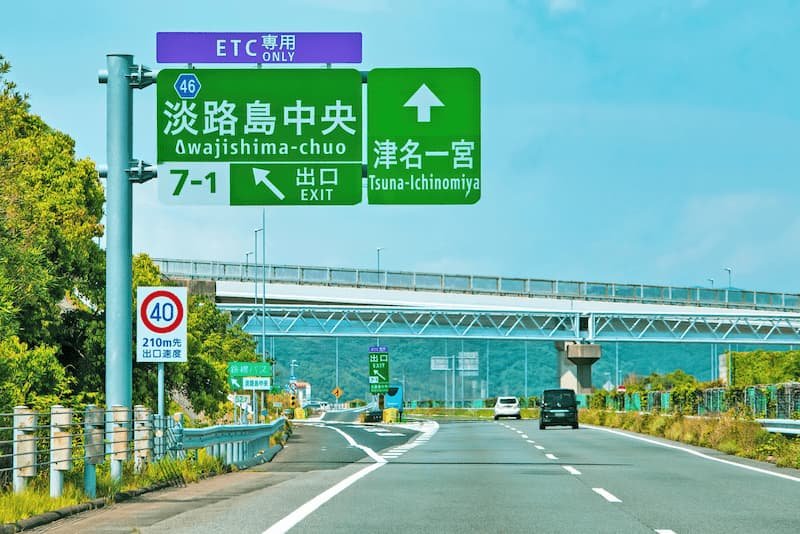
Access is limited to specific interchanges.
- Normal interchanges – Standard entry and exit ramps.
- Smart interchanges – Smaller exits for ETC card users, often closer to rural towns.
Tolls and ETC Cards – How Payment Works in Japan
Tolls are common, and costs can add up quickly. Most drivers use an ETC card (Electronic Toll Collection) for automatic payment, but cash lanes are still available.
Speed Limits, Speed Cameras, and Road Safety
The usual speed limit is 80–100 km/h (50–62 mph). It may feel slow if you’re used to US speeds, but Japanese expressways are often narrower and have more curves. There are many speed cameras, so it’s best to stay within the limit.
Road Quality and Rest Areas (SA & PA) in Japan
Road conditions are excellent, and rest areas are a highlight. Service Areas (SA) have full facilities — restaurants, shops, and even local specialties — while Parking Areas (PA) are smaller but still convenient.
👉 I’ve written more about this: Japan Highways Service Area – What Is The Difference From Rest Area In The USA?
What Is the American Interstate System?
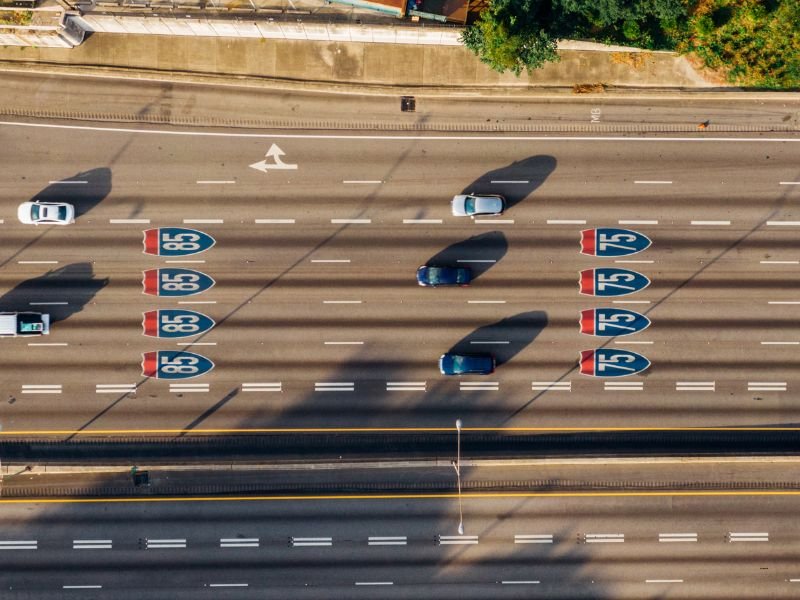
The American interstate system is the backbone of long-distance travel in the USA, connecting every state and major city.
The Role of the Interstate in US Road Travel
Designed for high-speed, long-haul journeys, interstates often cut straight through states, making cross-country driving possible without leaving the highway.
Access Points and Exit Frequency
Interstates also use on/off ramps, but exits are more frequent than in Japan — especially in suburban areas. In rural or desert regions, the next exit could be 30+ miles away, so it’s smart to refuel when your tank is half full.
Tolls, Turnpikes, and Payment Methods in the USA
Most interstates are free. Some states have turnpikes, where license plates are scanned automatically and bills are sent later. Drivers with toll transponders (like E-ZPass) often get discounts. Service plazas here tend to have the same chain restaurants and stores, unlike the variety in Japan.
Speed Limits and High-Speed Driving in the USA
Most interstates are set at 65–75 mph (105–120 km/h), but some areas allow up to 85 mph (137 km/h). High-speed driving is exciting, though long stretches can be repetitive — especially in flatland or desert areas.
Road Conditions – Why They Vary by State
Road quality depends on the state. Some have smooth, well-maintained surfaces, while others (like the state I currently live in) have rougher roads.
Cost & Travel Time: Real-World Examples
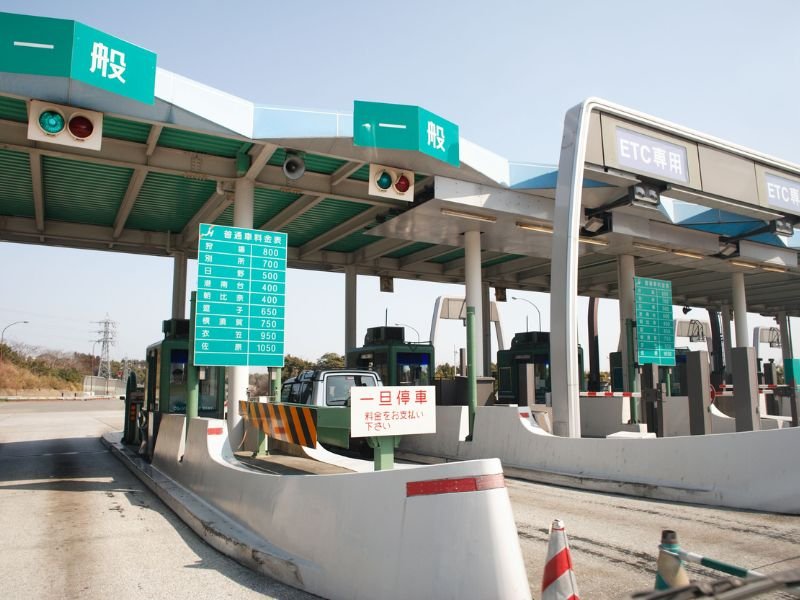
Numbers speak louder than words, so here’s what it’s really like to drive long distances in each country.
Example 1 – Tokyo to Osaka, Japan
- Distance: ~500 km (310 miles)
- Toll cost: Around ¥14,000 ($95) one way (Without any discounts)
- Travel time: About 6 hours (with rest breaks)
- Notes: You’ll pass through multiple toll gates, and service areas will tempt you with delicious local foods and souvenirs. The drive is smooth, but speed limits (80–100 km/h) mean you won’t be racing along.
Example 2 – Similar Distance in the USA (e.g., Dallas to Memphis)
- Distance: ~500 km (310 miles)
- Toll cost: $0 (if avoiding turnpikes)
- Travel time: Around 5 hours (with rest breaks)
- Notes: Speed limits are higher (65–75 mph, up to 85 mph in some areas), so you’ll likely arrive sooner. Rest stops tend to be simpler, often just gas stations and chain restaurants.
Travel time comparison in Japan and the USA
Most Japanese people don’t drive this route. Instead, they take the Shinkansen (bullet train), which is faster and more convenient. Driving long distances is less common in Japan because of high tolls, lower speed limits, and the availability of excellent public transportation.
In the USA, long-distance driving is a way of life. Americans often drive thousands of miles for vacations or family trips. For example, it’s not unusual to drive from Michigan to Florida for a winter getaway. The higher speed limits make covering long distances more practical, and since tolls are rare, the only big cost is fuel.
Pros and Cons for Travelers
Japanese Expressways
✅ Extremely clean and safe
✅ Excellent rest stops
❌ High toll costs
❌ Lower speed limits
American Interstates
✅ Usually free
✅ Faster speed limits
❌ Rest areas less frequent or basic in some areas
❌ Road conditions can vary
Cultural and Driving Etiquette Differences
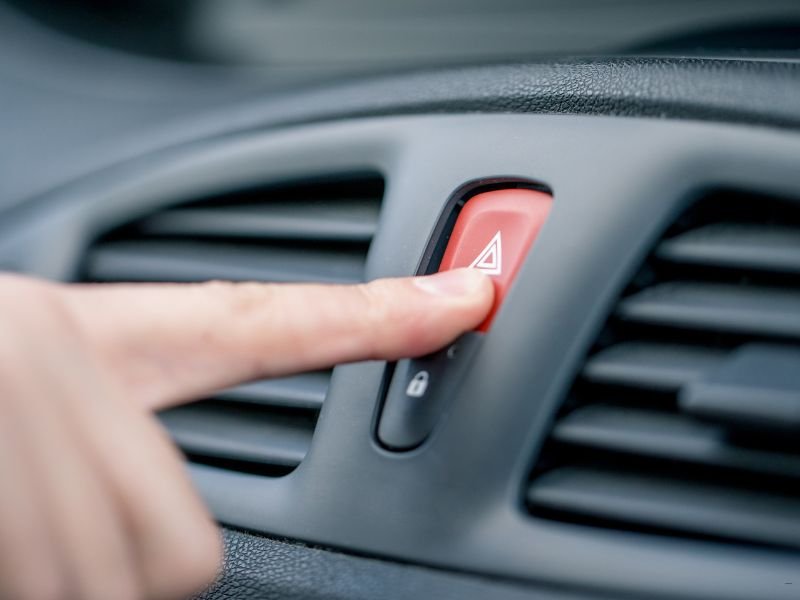
- Lane discipline – In Japan, keep left except when passing; the right lane is for overtaking only.
- Merging – US merging is often more aggressive. In Japan, especially on the Tokyo Shuto Expressway, merge lanes can be very short.
- Hazard lights as thanks – In Japan, many drivers flash hazard lights to say thank you when someone lets them merge.
- Overtaking rules – Japan strictly enforces overtaking only from the right; the USA is more flexible.
Traveler Tips for Driving in Japan and the USA
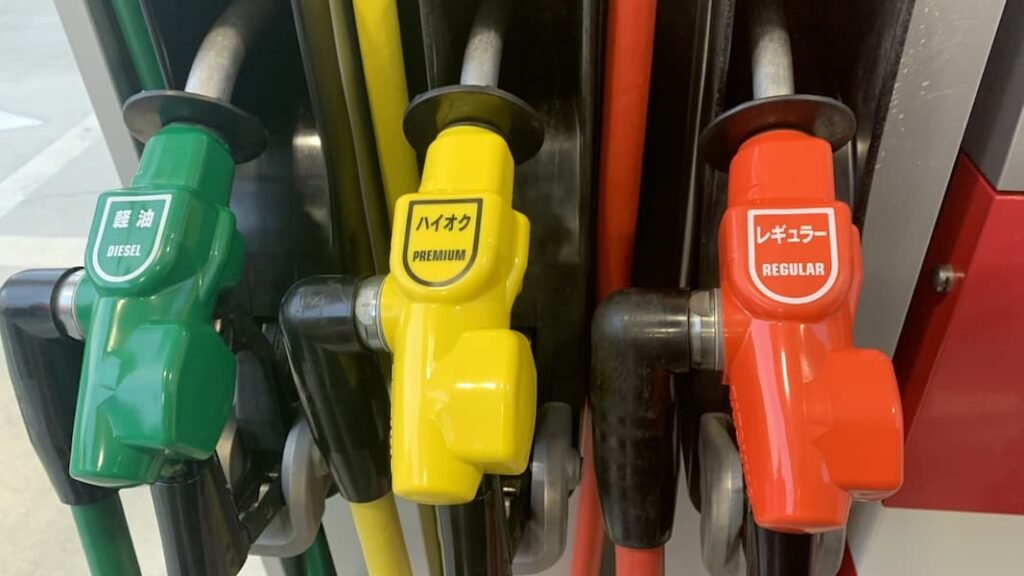
Renting a Car in Japan – Why You Need an ETC Card or Express Pass
ETC cards save time and money. Foreign travelers can sometimes get expressway passes for unlimited travel in certain regions — a great deal if you plan to drive a lot.
👉 If you’re planning to rent a car in Japan, check out my detailed guide: How to Rent a Car in Japan: The Complete Guide for American Travelers. It covers everything from international licenses to fuel tips and makes the whole process less intimidating.
Renting a Car in the USA – Toll Transponders and Costs
Ask if your rental car includes a toll transponder to avoid mailed bills.
Navigation Apps for Japan and the USA
- Japan: Google Maps, NaviTime, car GPS in English.
- USA: Google Maps, Waze, Apple Maps.
Fuel Prices, Payment, and Unit Differences
- USA: Fuel sold in gallons.
- Japan: Fuel sold in liters. Payment in Japan is often prepaid at the pump; in the USA, you can usually pay after filling.
Conclusion – Which Road System Is Better for You?
Both systems are efficient but reflect different priorities:
- Japan focuses on comfort, service, and safety.
- USA prioritizes speed, accessibility, and low cost.
If you want a polished driving experience with amazing rest stops, you’ll love Japan’s expressways. If you want freedom, long distances, and no toll bills, the American interstate is your best friend.
